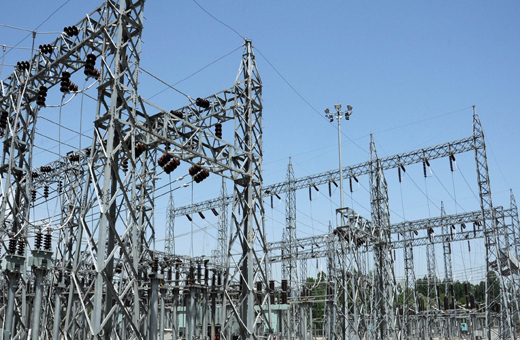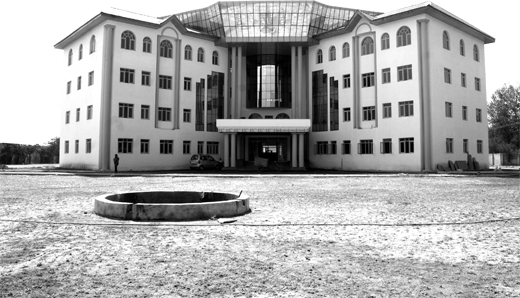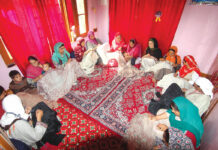With the fiscal deficit under control and the overall growth rate better than the national average, J&K is anticipating to spend a record Rs 43543 crore in the next fiscal. In the 14th budget of his political career, Finance Minister Abdul Rahim Rather declared agriculture sector completely tax free
Three 6s And 5 Years
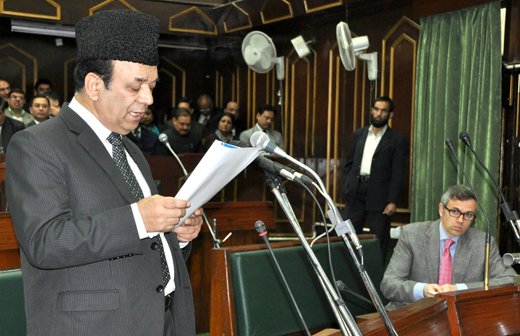 As far as I can recollect, there have been only two occasions in the legislative history of our State when the same Government presented its six budgetary proposals in succession before the House of Legislature under the same leader of the House. I am obviously talking of the period after the term of the elected Legislative Assembly was increased from five years to six years vide the Sixteenth Amendment incorporated in the J&K Constitution in the year 1977.
As far as I can recollect, there have been only two occasions in the legislative history of our State when the same Government presented its six budgetary proposals in succession before the House of Legislature under the same leader of the House. I am obviously talking of the period after the term of the elected Legislative Assembly was increased from five years to six years vide the Sixteenth Amendment incorporated in the J&K Constitution in the year 1977.
The first such historical event took place under the leadership of Sher-e-Kashmir Jenab Sheikh Mohammad Abdullah Saheb. Much later, six government budgets were also presented in succession under the leadership of our senior and wise political leader, the then Chief Minister, Jenab Dr Farooq Abdullah Saheb.
Today, the history is repeating once again, when the present Government headed by our dynamic and courageous leader, Jenab Omar Abdullah Saheb is going to present its sixth consecutive Budget in this august House. This is not a mere coincidence of history. It reveals much more to the discerning eyes of any political observer.
I consider myself to be singularly fortunate to be a part of this moment. Despite all my humility, I feel amply justified in taking pride in the fact that I am performing the onerous duty of presenting the Government Budget, under the visionary guidance of Jenab Omar Abdullah Saheb, also for the sixth time in a row.
Sir, this special occasion demands that before taking up my main task, I take a few minutes out of the precious time of this august House in presenting a synopsis of the budgetary performance of the Government during the last five years so that the Hon’ble Members can observe the consistency in the Government approach in pursuing the fiscal reforms which have been designed to make a long lasting impact on the welfare of the state and its people. The Hon’ble Members can also appreciate the wisdom of my individual initiatives, taken year after year, for imparting new dimensions to the state’s economy and to keep it on a fast track.
During my very first budget speech delivered before this august House on the 10th August 2009, I identified ten packs of major financial burden which I received in legacy. They included mounting fiscal deficit far in excess of the limits prescribed under the J&K FRBM Act, loss of financial benefits under items of Award of the Twelfth Financial Commission, shifting of about Rs 1,200 crore revenue expenditure from Plan to Non-Plan, retrospective implementation of the recommendations of the Sixth Central Pay Commission involving a big hike in the recurring expenditure on salaries and pensions as also arrears amounting to Rs 4,300 crore; and top of all, the worst economic slowdown staring at us at the national level.
These legacy issues posed a formidable challenge to the newly elected government and to me as its Finance Minister. That was the beginning of my current journey on the path of state finances.
Today, when I have arrived at the sixth milestone of this path, I can declare with full confidence that by now all these legacy issues stand sorted out quite satisfactorily. I do not intend to go into the details of our efforts in tackling these issues while keeping the state’s economy upbeat. However, I owe it to this august House to summarize the measures taken by us.
Managing Fiscal Deficit and Debt
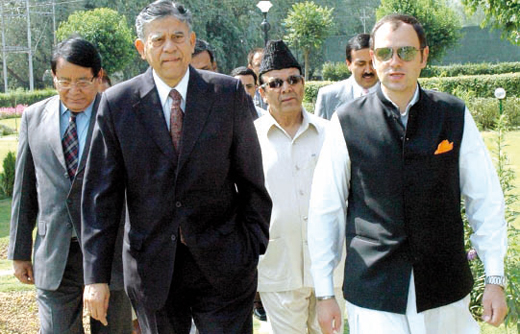 The J&K Fiscal Responsibility and Budget Management (FRBM) Act lays down the principles of fiscal management and also prescribes the fiscal targets to be adhered by the government. The Act also requires the government to present the prescribed statements in the given formats, before each House of the state legislature, to reveal the quality of compliance of these provisions.
The J&K Fiscal Responsibility and Budget Management (FRBM) Act lays down the principles of fiscal management and also prescribes the fiscal targets to be adhered by the government. The Act also requires the government to present the prescribed statements in the given formats, before each House of the state legislature, to reveal the quality of compliance of these provisions.
Therefore, my foremost priority was to start the practice of laying all such statements before this august House along with the Annual Financial Statements. In this manner, I managed to fully restore the government’s financial accountability before this august House.
New fiscal goals were laid for us by the Thirteenth Finance Commission. The toughest challenge before the Government was to steadily reduce its fiscal deficit to 3% by the year 2014-15. The intermediate fiscal deficit targets for the first four years starting from 2010-11 were 5.3%, 4.7%, 4.2% and 3.6% respectively. Besides these fiscal deficit targets, the Commission also prescribed gradual lowering of the ratios of our outstanding debt in relation to our GSDP.
My task didn’t end at moving the Bills to seek the necessary amendments for adopting the new fiscal deficit targets and the debt to GSDP ratios in the J&K FRBM Act. The real test lay in careful planning, hard work, initiating structural changes and close monitoring to realize the prescribed goals, even against a gloomy economic scenario prevailing at the national level. Our actual performance has been even better than these stiff targets. I kept this august House regularly posted with the progress of attaining these targets, year after year.
The FRBM Act defines the term “Fiscal Deficit” as “the excess of aggregate disbursements (net of debt repayments) over revenue receipts, recovery of loans and non-debt capital receipts”.
Normally, it is expressed as a percentage of the GSDP. As is apparent from this definition, fiscal deficit can be easily controlled by taking recourse to no borrowings or low borrowings and overlooking the development needs. This would be a passive outlook. The challenge lies in marshalling maximum resources, while remaining within complete fiscal discipline; and to use them for optimizing public welfare. Therefore, I adopted a pro-active approach and decided to work on a three pronged action plan.
Firstly, the revenue expenditure of the state should be reduced. Secondly, the state’s own revenue must be maximized. And thirdly, the GSDP should be placed in a reasonably high growth trajectory.
The strategy adopted by me was: to devise, introduce and implement short term, medium term and even long term structural reforms in the state Finances and to take other legislative and administrative measures for effectively meeting all these three objectives concurrently.
What is fiscal deficit?
The difference between aggregate disbursements net of debt repayments and recovery of loans and revenue receipts and non-debt capital receipts.
Fiscal Deficit:
| Year-wise position | |||
| Financial Year | Fiscal Deficit (in Rs. crore) | GSDP at current prices (revised base 2004-05) (in Rs. crore) | Fiscal Deficit as %age of GSDP (at current prices) |
| 2006-07 | 1930 | 33230.11 | 5.81 |
| 2007-08 | 2666 | 37098.63 | 7.19 |
| 2008-09 | 2748 | 42314.84 | 6.49 |
| 2009-10 | 3989 | 48384.51 | 8.24 |
| 2010-11 | 2367 | 56975.88 (58072) – (revised) | 4.15 ( 4.07) |
| 2011-12 | 2833* | 65978.70 65758.52(revised) | 4.29 (4.30) |
| 2012-13 | 2975** | 76115 | 5.5 (3.91) |
| * Fiscal Deficit of Rs. 2833.00 crore has been worked out after excluding Cash Balance Investment Account of Rs. 749.88 crore and Rs. 110.61 crore being interest on Rs. 1300 crore raised for liquidation of Over | |||
| Year | Targets as per 13th FC (Total P.D) | Achievements (Total Public debt as percentage of GSDP) |
| 2010-11 | 56.10 | 54.76 |
| 2011-12 | 55.10 | 54.84 |
| 2012-13 | 55.10 | 52.90 |
Source: Economic Survey 2013-14
Cutting down the Revenue Expenditure
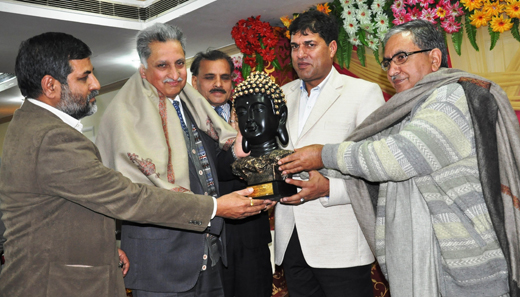
The four biggest items of revenue expenditure are: salary of government employees, pensions, interest payments and cost of purchase of energy. Next in line are other items of expenditure incurred in maintaining the government offices and running their public service activities.
Expenditure on pensions:
The size of this problem can be gauged from the fact that the annual expenditure on payment of pensions which used to be only Rs 938 crore during the year 2005-06, has grown manifold to around Rs 3,673 as per the current year’s revised estimates. The next year’s BE places the pension expenditure at Rs 3,980 crore. The number of pensioners at that time was only about ninety thousand. It has now grown to about one lakh and sixty one thousand. The high rate of growth in this item of expenditure is on account of the large net additions in the live register of pensioners every year and the biennial releases of fresh DA installments at quite high rates corresponding to the prevailing high rates of inflation at the national level.
Therefore, my first major reform measure was the introduction of a New Pension Scheme at the time of my very first Budget presentation. This measure ensures that the employees recruited after introduction of the New Pension Scheme shall receive guaranteed superannuation benefits and regular monthly pension in a structured manner.
The expenditure on the pensions of the employees covered by this Scheme shall be outside the Consolidated Fund of the State.
I can only wish that such a measure should have been thought of much earlier.
However, now that we have implemented the New Pension Scheme, the posterity shall be reaping the benefits of this historical measure, even though the current budgetary expenditure shall somewhat increase due to the matching monthly contributions required to be made by the Government into the individual pension accounts of the new employees. So far about 42,000 employees have come under the New Pension Scheme.
Expenditure on payment of interest:
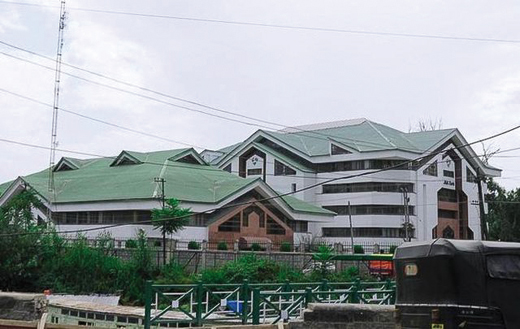 The next important measure introduced by me as part of the structural reforms was liquidating the long outstanding and never ending overdraft liability of the J&K Bank which had swelled beyond Rs 2,300 crore by March 2010; and simultaneously shifting to the Ways and Means arrangement with the Reserve Bank of India. I had explained the rationale behind adopting this measure in sufficient details before this august House. As anticipated by me, this step of ours proved to be a win-win situation both for the Government and the J&K Bank. While the government has been benefitted by a net annual saving of around Rs 225 crore in its interest payments, the Bank seized the opportunity to utilize this amount of Rs 2,300 crore added to its deposits, for further improving its advances, particularly in the priority sector lending.
The next important measure introduced by me as part of the structural reforms was liquidating the long outstanding and never ending overdraft liability of the J&K Bank which had swelled beyond Rs 2,300 crore by March 2010; and simultaneously shifting to the Ways and Means arrangement with the Reserve Bank of India. I had explained the rationale behind adopting this measure in sufficient details before this august House. As anticipated by me, this step of ours proved to be a win-win situation both for the Government and the J&K Bank. While the government has been benefitted by a net annual saving of around Rs 225 crore in its interest payments, the Bank seized the opportunity to utilize this amount of Rs 2,300 crore added to its deposits, for further improving its advances, particularly in the priority sector lending.
The total advances of the J&K Bank which stood at Rs 12,173.65 crore as on 31st March 2010, jumped to Rs 17,988.18 crore as on 30th September 2013, indicating an increase of about 48%. The priority sector lending increased during this period by Rs 4,037.12 crore, from Rs 5,520.98 crore as on 31st March 2010 to Rs 9,558.10 crore as on 30th September 2013. These figures reveal a very impressive jump of over 73% in the priority sector lending of the J&K Bank.
The other items of interest payments emanate from open market borrowings, central loans, State Provident Fund, share in net collections under the National Small Savings Scheme, and negotiated loans etc. The net additional loans raised every year are part of the Scheme of Financing (SOF) of our Annual Plans and their quantum is determined by the Planning Commission of India in consultation with the Ministry of Finance. While resorting to such borrowings, I have always abided by the fiscal parameters laid down in the J&K FRBM Act.
Expenditure on salaries:
Yet another major and extremely bold initiative taken by the present government was to devise and adopt the stipendiary mode of recruitment against all future vacancies arising at Class III and Class IV levels. This measure has enabled us to fulfill the aspirations of a larger number of educated unemployed youth who seek government jobs as their career. At the same time, by this method we shall be able to control the ever increasing expenditure on salaries to quite an extent. After initial hurdles of litigations, the new mode has been made fully operational. This bold initiative shall start yielding appreciable results in the next couple of years.
Expenditure on purchase of energy:
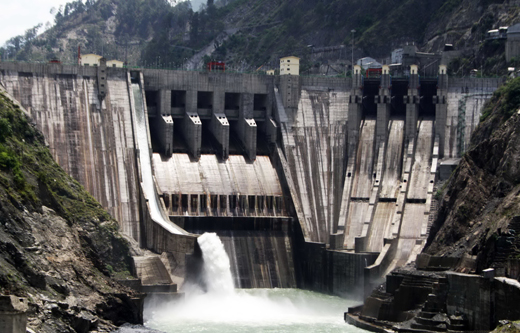 It can be appreciated that no scope exists for making any cut in the expenditure being incurred on power purchases as long as the wide gap between the power demand and our own generation persists. We have to buy energy from outside the state for meeting the growing needs of various segments of consumers. The current average cost of purchase is around Rs 3.46 per unit and we spend a huge amount on purchase of energy every year. The current year’s budgetary allocation for purchase of energy is Rs 3,336 crore. The Power Development Department has been, nonetheless, asked to see if bringing in more professionalism in power purchase planning and execution can bring in some savings in this item of expenditure.
It can be appreciated that no scope exists for making any cut in the expenditure being incurred on power purchases as long as the wide gap between the power demand and our own generation persists. We have to buy energy from outside the state for meeting the growing needs of various segments of consumers. The current average cost of purchase is around Rs 3.46 per unit and we spend a huge amount on purchase of energy every year. The current year’s budgetary allocation for purchase of energy is Rs 3,336 crore. The Power Development Department has been, nonetheless, asked to see if bringing in more professionalism in power purchase planning and execution can bring in some savings in this item of expenditure.
Another way of cutting down the expenditure on this item is to maximize our own local generation of hydel power in the shortest possible time. I will be apprising the Hon’ble Members of this august House in a short while, of the ongoing programmes to achieve this objective.
Other items of expenditure:
Apart from these major initiatives, the government has been regularly enforcing the austerity measures in the functioning of all the government offices. Their budgetary allocations under all such object heads where savings can be effected without adversely affecting the efficiency of public services, are being kept under tight leash.
Cost saving systems, like outsourcing of non-core services by the departments and use of CFLs by all the government offices for conserving electrical energy, have also been adopted.
Components of Committed Expenditure
| Components of Committed Expenditure | 2007-08 | 2008-09 | 2009-10 | 2009-11 | 2010-12 | 2011-13 |
| Salaries & Wages of which | 4426 (33.34) | 4820 (33.70) | 6365 (36.18) | 7772 (34.96) | 10113 (40.81) | 10600 (40.43) |
| Salaries Non-Plan Head | 4170 | 4682 | 6095 | 7467 | 9665 | 10036 |
| Salaries Plan Head | 256 | 138 | 233 | 305 | 448 | 564 |
| Interest Payments | 2436 (18.35) | 1578 (11.03) | 2139 (14) | 2283 (10.26) | 2383 (9.61) | 2707 (10.33) |
| Pensions | 1193 (8.99) | 1269.40 (8.89) | 1568 (8.91) | 2242 (10.08) | 3296 (13.29) | 3463 (13.21) |
| (Figures in parenthesis represent percentage of revenue receipts) | ||||||
Year wise details of power Tariff deficit (Rs in crore)
| Financial year | Target | Actuals | Power purchase | Deficit |
| 2002-03 | 440 | 607 | 882 | 275 |
| 2003-04 | 455 | 368 | 1135 | 767 |
| 2004-05 | 483 | 383 | 1318 | 935 |
| 2005-06 | 461 | 384 | 1674 | 1290 |
| 2006-07 | 405 | 479 | 1355 | 876 |
| 2007-08 | 780 | 601 | 1750 | 1149 |
| 2008-09 | 922 | 630 | 2034 | 1404 |
| 2009-10 | 1065 | 702 | 1997 | 1295 |
| 2010-11 | 1209 | 822 | 2310 | 1488 |
| 2011-12 | 1486 | 1007 | 3000 | 1993 |
| 2012-13 | 2387 | 1589 | 3870 | 2281 |
Maximization of Own Revenue

I am fully conscious of the fact that maximizing the State’s Tax and Non-Tax revenue is the bounden responsibility of every Finance Minister. I will briefly narrate the results of my efforts made in this direction.
Tax Revenue
Levying of new taxes and increasing the existing tax rates can be easy and tempting options for any Finance Minister. However, I have always kept the common man in sight and ensured that he shouldn’t be made to bear any additional tax burden. Rather, he deserves some relief. Certain sectors of our economy and vulnerable segments of our society deserve incentives and tax concessions which I have been extending, rather generously, year after year. Even then, the tax collections have been maximized by me mainly by resorting to better management practices which have been duly supported by new legislative initiatives.
VAT performance
Far reaching amendments have been introduced by me in the J&K VAT Act subjecting the VAT administration to undergo many qualitative changes which have contributed to a sharp rise in its collections. Important amendments have also been made by me in the J&K VAT Rules to make them simple in compliance, more effective and business friendly. Computerization of VAT administration and enforcement of vigilance and grievance redressing mechanisms introduced by me have considerably removed the hassles in assessment of taxes, simplified the process of collection of VAT and facilitated e-filing of VAT Returns.
In comparison to the VAT collections of Rs 1,836 crore in the year 2008-09, the current budgetary target is nearly Rs 4,800 crore. Over the last five years period, the revenue has increased to more than two and a half times or by over 161%.
The average annual growth works to over 32%.
Stamp Duty
I had initiated wide ranging amendments in the existing Stamp Duty Act to make it more effective and dynamic. This initiative greatly helped us in immediate enhancing and subsequently stabilizing our annual collections on account ofStamp Duty and Registration Fee. The collections on these items, which used to be only around Rs 57 crore in the year 2008-09, have jumped to the vicinity of Rs 322 crore within the last five years.
In pursuance to the enabling provisions created by the aforementioned amendments in the Stamps Act, we have decided to go for e-stamping of documents and transactions. Very recently, a MOU has been signed by the Commercial Taxes Department with the Stock Holding Corporation of India to prepare and roll out the e-stamping system at the earliest possible. This initiative shall go a long way in further boosting our Stamp Duty collections and cutting down the administrative expenses.
Taxes on vehicles
Even the taxes on vehicles have registered a similar growth. In comparison to the collections of only Rs 65 crore during the year 2008-09, the current years estimates are over Rs 150 crore. The increase is nearly two and a half times.
Total Tax Collections
Talking of the total tax collections, our progress can be appreciated from the fact that in comparison to the total tax collections of Rs 2,683 crore made in the year 2008-09, our current year’s BE figure is Rs 6,700 crore. This signifies an overall growth of about two and half times in a period of five years. The annual average growth rate comes to nearly 30% which is a record performance by any standards. The performance of our tax revenue realizations has been widely appreciated at all India level in the forums like the Empowered Committee of State Finance Ministers, Planning Commission, the Finance Commission, Principal Accountant General and the Ministry of Finance.
While achieving such impressive growth in tax revenue during all these five years, I always took care that no new tax burden is placed on the shoulders of the common man. I laid more emphasis on improved tax management for attaining my objectives.
I have also tried to use tax system as a tool for gearing up the key sectors of the State’s economy. The Agriculture Sector has been made almost totally tax free in accordance with the wishes of our Hon’ble Chief Minister, Jenab Omar Abdullah Saheb. The basic objective of these concessions is to make Agriculture a profitable and attractive profession for our farming brothers.
Tax system has also been successfully used to encourage and protect our MSME Sector and stimulate the growth of other economic pursuits such as poultry farming which face several inherent disadvantages of working within our land locked economy.
| Components of Tax Revenue (Rs in crore) | ||||||
| S. No | Source of Tax Revenue | 2008-09 (A) | 2009-10 (A) | 2010-11 (A) | 2011-12 (A) | 2012-13 (A) |
| 1 | Taxes on sales, trade etc./VAT* | 1836 (68.43) | 2146 (70.90) | 2425 (69.62) | 3414 (71.95) | 4174 (71.57) |
| 2 | State excise | 239 (8.91) | 294 (9.71) | 337 (9.68) | 385 (8.11) | 421 (7.22) |
| 3 | Taxes on vehicles | 65 (2.42) | 83 (2.74) | 115 (3.30) | 105 (2.21) | 118 (2.02) |
| 4 | Stamps and registration | 57 (2.12) | 70 (2.31) | 79 (2.27) | 171 (3.6) | 240 (4.11) |
| 5 | Land revenue | 64 (2.39) | 15 (0.50) | 42 (1.21) | 33 (0.70) | 96 (1.64) |
| 6 | Other taxes** | 422 (15.73) | 419 (13.84) | 485 (13.92) | 637 (13.42) | 783 (13.42) |
| 7 | Total | 2683 (100) | 3027 (100) | 3483 (100) | 4745 (100) | 5832 (100) |
| Increase over respective previous Year ( % ) | 4.85 | 12.82 | 15.06 | 36.23 | 22.90 | |
| * Includes also service tax, ** Includes taxes on goods and passengers, taxes and duties on electricity and other taxes and duties on commodities and services, (A) = Actual, Figures in brackets indicate percentage share. | ||||||
Source: Economic Survey 2013-14
Boosting The Economy
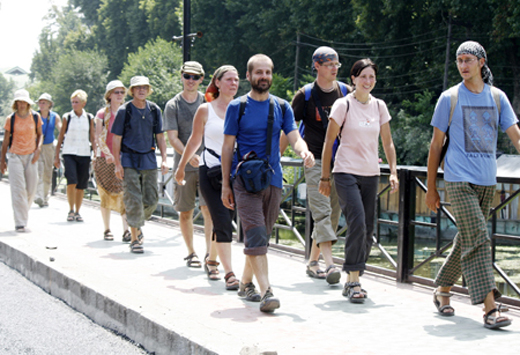 The biggest factor contributing to the economic progress is peace. It goes to the credit of the dynamism and courage of our Hon’ble Chief Minister, Jenab Omar Abdullah Saheb that despite very complex issues of internal security, he has been able to restore peace and order in the state which has improved the confidence levels of the business and increased the turnover in crucial sectors like tourism, industry, transport, horticulture, sericulture, floriculture, and also various other services.
The biggest factor contributing to the economic progress is peace. It goes to the credit of the dynamism and courage of our Hon’ble Chief Minister, Jenab Omar Abdullah Saheb that despite very complex issues of internal security, he has been able to restore peace and order in the state which has improved the confidence levels of the business and increased the turnover in crucial sectors like tourism, industry, transport, horticulture, sericulture, floriculture, and also various other services.
For the third year in succession, tourist inflows into the state have been quite good, even though the major tragedy involving heavy loss of life and property in Uttrakhand during the last summer seems to have dampened the tourist enthusiasm to visit our state during that period.
Annual budgetary investments play a catalytic role in creating a multiplier effect in the economy. Our budgetary expenditure has risen by more than double from the level of Rs 17,012 crore in the year 2008-09. The budgetary investments and restoration of peace and order by the government provided the right mix for thriving of the state’s economy. This reality is amply evidenced by a steady growth in our GSDP during the last five years even though this period witnessed a visible slowdown in the growth of national economy.
In comparison to the GSDP figure of Rs 42,314.84 crore at current prices during the year 2008-09, our GSDP reached Rs 75,574.31 crore last year as per Quick Estimate, and is estimated to reach Rs 87,318.72 crore during the current financial year as per Advance Estimate. It has more than doubled during the last five years. The current year’s rate of growth over the last year’s figure works to 15.54%.
At constant prices, our GSDP was Rs 34,664.22 crore in the year 2008-09. It is now estimated at Rs 45,399.45 crore for the current financial year, indicating an increase of about 31%.
The Per Capita Income (PCI) is a sound measure of financial well being of the individuals in an economy. By this parameter also, our performance during the first five years has been quite encouraging and steady. Our PCI at current prices is estimated to have reached Rs 63,232 during the last financial year and has further increased to Rs 72,188 during the current financial year (2013-14). In comparison, the corresponding figure for the year 2008-09 was only Rs 30,212. It has nearly increased by two and a half time. Even at constant prices, the PCI has grown to Rs 37,533 during the current year in comparison to Rs 25,641 in the year 2008-09. This indicates an increase of roughly 50% over a period of five years, or a simple average growth of around 10% per annum.
I have already laid the Economic Survey Report for the year 2013-14 on the floor of this August House. It contains many other economic parameters, indices and statements of physical and financial achievement made by the present Government in various sectors. I am not elaborating on those items here. It may suffice here to say that our GSDP has maintained its growth trend despite a sluggish national economy. Over the last year’s figure of Rs 42,878.25 crore (Quick Estimate), its growth rate works to 5.88%. It shows a slight improvement over our last year’s figure of 5.51%. In comparison, the growth rate of GDP at the All India level for the current financial year is being estimated at 4.8%.
As far as the sector-wise contribution to the GSDP is concerned, the Primary Sector is estimated to contribute 21.07%. Its growth rate is estimated as 1.44%. Within the Primary Sector, the growth rate of Agriculture and Animal Husbandry segment is estimated at 1.56%. The Secondary or Industrial Sector is estimated to contribute 22.39%.
Its growth rate is estimated as 3.79%. The Tertiary or the Service Sector maintains its prominence and its contribution has been estimated to rise to 56.54%. Its growth rate comes to 8.47%.
| Gross Domestic Product of J&K and India at constant (2004-05) prices (Rs in crore) | ||||||
| Year | 2004-05 | 2009-10 | 2010-11 | 2011-12 | 2012-13 | 2013-14 |
| GSDP of J&K (Rs. in lakh) | 2730462 | 3622489 | 3826996 | 4064065 (QE) | 4287825 (QE) | 4539945 (AE) |
| GDP of India (Rs. in lakh) | 297146400 | 451607100 | 491853300^ | 524753000@ | 548211100* | —- |
| % Contribtion of J&K to India | 0.92 | 0.80 | 0.78 | 0.77 | 0.88 | —- |
| Per capita GSDP of J&K (Rs.) | 25478 | 31483 | 32824 | 34424 | 35875 | 37533 |
| Per capita GDP of India (Rs.) | 27286 | 38599 | 41472 | 43657 | 45046 | —- |
| Growth rate J&K (%age) | —- | 4.5 | 5.65 | 6.19 | 5.51 | 5.88 |
| Growth rate India (%age) | —- | 8.6 | 8.9 | 6.7 | 4.5 | |
| QE: Quick Estimates, AE: Advance Estimates * Ist Revised Estimates, @ IInd Revised Estimates, ^ IIIrd Revised Estimates | ||||||
Source: Economic Survey, J&K, 2013-2014
Tax Concessions Spur Economic Activities
For the last five years, I have been regularly announcing a number of tax concessions to boost various sectors of our economy, and more particularly for our brothers from the farming community. These concessions include abolition of
VAT and Toll on chemical & bio-fertilizers, agricultural tools & implements, farming machinery, all types of fungicides & pesticides; abolition of GST on manufacturing and installation of poly houses and micro-irrigation facilities; reduction of VAT, and in some cases total exemption on many items of agricultural produce; and abolition of Toll on the movement of various agricultural inputs and accessories through Lakhanpur Toll Post. Services of the crop insurance and cattle insurance were given full exemption from payment of Service Tax.
In order to encourage the use of Kissan Credit Cards, loans up to Rs 1, 50,000 given against each KCC were exempted by me from the levy of Stamp Duty. I am happy to note that the commercial banks lent about Rs 4,343.32 crore to the
Agriculture Sector as on 30th September 2013. Out of the total Agricultural Credit, 57% credit was advanced against the Kissan Credit Cards.
During this period, we also exempted the domestic cooking gas cylinders from the levy of VAT. For helping the women self help groups, jute fabric brought by the J&K Women’s Development Corporation from outside the state was fully exempted from VAT and Toll. VAT concessions were also given to the youth and other users of computers and their accessories. IT and Computer Education were exempted from payment of Service Tax. The school children were given VAT exemption on stationery items. In order to provide relief to the common man in the field of healthcare, all investigative and diagnostic services were taken out of the net of Service Tax.
Card For Kissan
Upto the end of September 2013, banks have sanctioned a total number of 7,25,111 KCCs in J&K State, against which 5,31,589 KCCs have been disbursed credit amounting to Rs.2,460.28 Crore. This includes 5, 84,213 KCC cases sponsored by Agriculture Department, J&K Govt. to various banks operating in the State and 2,60,290 KCC cases taken up by the banks directly. As per the data received by State Level Bankers Committee 88,647 cases have been rejected while 30,745 cases are pending with banks. Total number of KCC cases sanctioned works out to an achievement of about 72% of the target of 10.09 lakh farm-operating families in the state.
Out of the total KCCs sanctioned by banks, 48.82% has been contributed by J&K Bank alone having sanctioned 3, 53,986 KCCs. Other major players include JKGB with 1, 25,848 KCCs, SBI with 61,049 KCCs, EDB with 57,252 KCCs & PNB with 42,159 KCCs.
(Source: SLBC, J&K)
The non tax revenue too has shown similar impressive growth. In comparison to the total Non Tax revenue collection of Rs 837 crore made during the year 2008-09, the last year’s actual realization was Rs 2,160 crore. The collections on account of the energy charges alone amounted to Rs 1,589 crore in comparison to the collections of only Rs 630 crore made during the year 2008-09.
The Power Development Department is implementing the Restructured Accelerated Power Development & Reforms Programme (RAPDRP) at a cost of over Rs 1,856 crore to improve its energy distribution and revenue collection systems. Its AT&C losses have gone down to 63.80% during the last year in comparison to the figure of 72.06% during the year 2008-09. They are estimated to further go down to 59.00% during the current financial year, indicating improvement of over 13 percentage points. As far as the T&D losses are concerned, the figure is expected to go down from 63.10% in the year 2008-09 to 52.00% during the current financial year, showing an improvement of more than 11 percentage points.
The SKEWPY
I had introduced the Sher-e-Kashmir Employment & Welfare Programme for the Youth (SKEWPY) during the presentation of my first Budget before this August House in August 2009.
The SKEWPY was formally launched on 5th December 2009. After completion of all the requisite formalities and hammering out a MOU with the J&K Bank as a strategic partner for implementation of the Seed Capital Fund Scheme which is one of the core component of SKEWPY, it was made operational from the next year. The Programme picked up quickly. Up to the end of December 2013, over 5,000 entrepreneurs have been registered for the Seed Capital Fund under SKEWPY and 3,650 proposals have been approved by the Steering Committee so far. The total cost involved in these approved ventures is Rs 403 crore including the seed capital of Rs 98 crore which is being provided by the government through the J&K
Entrepreneurship Development Institute (JKEDI). The total employment potential of these enterprises is estimated at 16,634 persons.
In order to attract the unemployed youth towards this programme, the
has held a large number of awareness camps at the districts level. It has also imparted training to 7,676 prospective entrepreneurs through its specialized short term courses conducted so far.
The success stories of these entrepreneurs who have set up their ventures with the help of the Seed Capital Fund are indeed very encouraging. These success stories are now attracting other educated unemployed youth to come forward and become a beneficiary of this Programme.
Another component of SKEWPY, Voluntary Service Allowance which is in the nature of hand holding of our educated unemployed youth until they get absorbed in an appropriate economic pursuit is currently benefitting over 50,000 educated unemployed boys and girls. It involves an annual outgo of about Rs 50 crore.
Rural Self Employment Training Institutes (R-SETIs) have been established by the J&K Bank and the State Bank of India in all the 22 districts of the State. These R-SETIs have started imparting training in entrepreneurship development to the local youth with encouraging results. The Government is in the process of providing land to all these Institutes so that they can develop their own permanent training establishment.
The efforts of the entrepreneurial skill development are also being supported through a host of other skill development measures, such as Polytechnics and the ITIs, training centres run by the departments like the Directorate of Handicrafts, the Directorates of Industries & Commerce, the Directorate of Handloom Development, Directorates of Animal Husbandry, Directorates of Sheep Husbandry, Directorates of Floriculture etc.
The initiatives taken up under SKEWPY are also finding support from the Central interventions like Himayat and Udaan. The results of these multipronged actions are quite encouraging. I am confident that SKEWPY shall remain the hub of all employment generating activities in the State.
Restructuring of PSEs
I had earlier made a mention of the Government’s proposal to bring in effective changes in the functioning of the Public Sector Enterprises of the state. The government had appointed a Committee of senior officers headed by the
Economic Advisor, which looked into the common aspects of functioning of the PSEs and also the specific problems faced by each of them. The Committee has submitted its comprehensive report. Its recommendations cover policy and investment issues, fiscal restructuring, management improvement, tightening of controls, personnel policies, proper utilization of the surplus real estate properties in a planned manner, staff reorganization and close monitoring of functioning of the PSEs under a well laid institutional framework. These recommendations are presently under active consideration of the Government. We shall ensure that our loss making PSEs are turned into profit making assets for the Government and the profitability of other PSEs is improved further.
The J&K State Financial Corporation had played a pivotal role in promotion of industrial enterprises and other economic ventures in the state during the seventies and the eighties. It was about to die a slow death when the present government took charge and entrusted its direct responsibility to me as its Chairman. The Corporation had a negative net worth of Rs 104.58 crore and was loaded with liabilities of about Rs 180.40 crore payable to SIDBI, IDBI and other financing institutions. I got a comprehensive plan of action prepared for its revival which has been under strict implementation over all these years. The Corporation has settled almost all its liabilities and its net worth turned positive as on 31st March 2013. It has started making profits once again after a gap of 15 years. It has cleared the backlog of 7 years of audit of its accounts which are now up to date. In recognition of all these positive developments, SIDBI has now formally agreed to restore refinancing facilities to the J&K State Finance Corporation. Accordingly, J&K SFC is now all set to return to its golden era in the times to come.
Key Infrastructural Projects
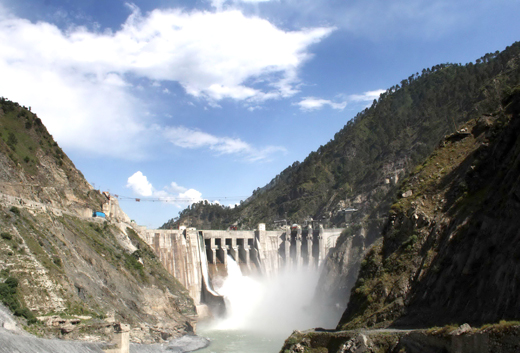 In respect of power generation, we have harnessed potential of 2693.45 MW so far through 32 HEPs under Central, State and IPP sectors. The addition made during the last five years comes to 824.26 MW. Out of this, installed capacity of 235.50
In respect of power generation, we have harnessed potential of 2693.45 MW so far through 32 HEPs under Central, State and IPP sectors. The addition made during the last five years comes to 824.26 MW. Out of this, installed capacity of 235.50
MW has been added during the current financial year (2013-14) itself through the commissioning of six HEPs, namely Nimo Bazgo, Chutak, Pahalgam, Uri-II (two units), Tangmarg and Ranjala Dunadi.
Twenty HEPs with a total installed capacity of 1785 MW are under execution. Twenty eight HEPs with combined capacity of 2296.50 MW are at various stages of tendering. Four HEPs with combined capacity of 3558 MW are under appraisal of CEA and CWC. Ten HEPs with capacity of 2237 MW are under investigation including some for which DPRs are also under preparation.
The work on the execution of 450 MW Baglihar Hydro Electric Project Phase II is at an advance stage. Efforts are on to get it commissioned during the summer of 2015. The 850 MW Rattle HEP in IPP mode and four more other HEPs are slated to be commissioned by the year 2017.
A positive development has taken place on the thermal power generation side which is essential to meet our winter needs when our hydel generation is at its lowest level. After lot of persuasion and follow up, the Ministry of Coal has agreed to allot a coal block located in the state of Odisha, in the joint name of J&K SPDC and NTPC.
A consultant has been accordingly appointed by J&K SPDC to conduct technical studies for exploitation of this coal block for setting up a 660 MW thermal power plant. Simultaneously, the details of a joint sector arrangement are also being negotiated with the NTPC. We can now hope that the work on a much needed thermal project shall commence in near future after completing all the relevant formalities and obtaining all the requisite clearances.
The Government has already raised the issue of taking back all the old Hydel Projects commissioned by the NHPC, which have already generated enough returns for their owners by now, so that these projects can become a source of strength for the economic base of the State. The Government is firm in its determination to take recourse to all possible means at its disposal to take this exercise to its logical end.
On the directions of the Government, the State Power Development Corporation is actively engaged in an exercise of quantification of losses incurred by the State in the past, as well as the ongoing and future losses on account of the adverse provisions of the Indus Waters Treaty. The Government intends to take up this issue with the Union Government in a conclusive manner once it is armed with the necessary data.
The Government has already raised the issue of increasing the free power share of the State Government in all the Hydel Projects executed in the Central Sector from its present level of 12% to at least 30%, through various forums. We are supported in our demand by other Himalayan States as well.
We shall be taking up all these issues forcefully, with the Fourteenth Finance Commission as well, before and during their expected visit to the State during the next summer.
The Government has been pursuing its case to secure its rights in the Thein Dam Project, which have been persistently denied to us by the Punjab Government. In the meanwhile, the Government engaged a Consultant to suggest an alternative way of tapping our waters from the upper reaches of the Thein Dam. The Consultant prepared a DPR and based on that, the Government has accorded approval to the execution of a Rs 275 crore irrigation project to carry waters up to Basant Pur. The Department has floated tenders for the ‘intake structure’ and has simultaneously initiated action for obtaining the environment clearance for execution of the Project.
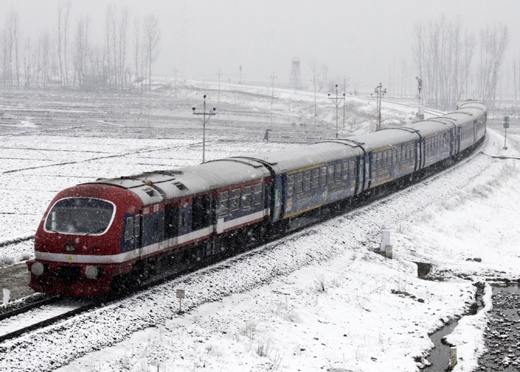 The current financial year witnessed the extension of railway line from Qazigund in Kashmir Valley to Banihal in Jammu Division through a 17.2 km long tunnel across the Pir Panjal mountain range.
The current financial year witnessed the extension of railway line from Qazigund in Kashmir Valley to Banihal in Jammu Division through a 17.2 km long tunnel across the Pir Panjal mountain range.
The railway line has been an instant hit with the people living across the two sides of Pir Panjal. The several hour long distance between the two points has been reduced only to a few minutes. I am sure that in due course of time it will also make a significant impact on the economy of this region.
The Domel-Katra railway link which shall facilitate the carriage of yatris to Shri Mata Vaishno Devi Ji shrine up to Katra is also likely to be commissioned soon. The trains full of the devotees from various parts of the country can be expected to directly chug in to Katra in the very near future.
The works on the laying of railway track between Katra and Banihal are reportedly progressing satisfactorily. The entire rail link between Kashmir and the rest of the country is scheduled to be completed by the year 2017.
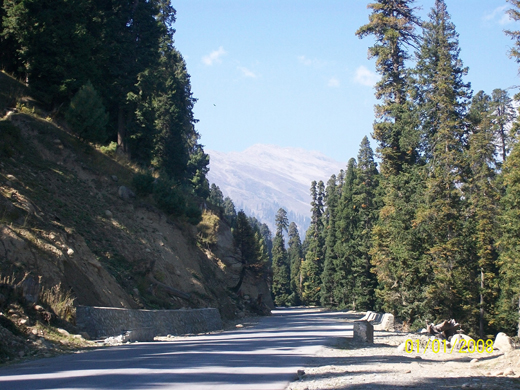 The Mughal Road linking the two regions of the State through an alternative link between parts of Shopian in Kashmir valley and Poonch in Jammu Division has been completed as a fair weather road within the originally prescribed parameters, at an estimated cost of Rs 640 crore.
The Mughal Road linking the two regions of the State through an alternative link between parts of Shopian in Kashmir valley and Poonch in Jammu Division has been completed as a fair weather road within the originally prescribed parameters, at an estimated cost of Rs 640 crore.
The State Government is now trying to convince the Central Government about the need to fund it further for converting it into an all weather road.
The works on upgrading of the National Highway 1A are at various stages of implementation. The Lakhanpur to Nagrota portion is now complete. The portion between Nagrota and Udhampur is expected to be commissioned during the forthcoming summer. A couple of stretches continue to be problematic. Let’s hope that the work on these two stretches shall also be expedited.
I have given the latest status of only a few selected projects the completion of which shall make very deep impact on the growth of economy of our State.
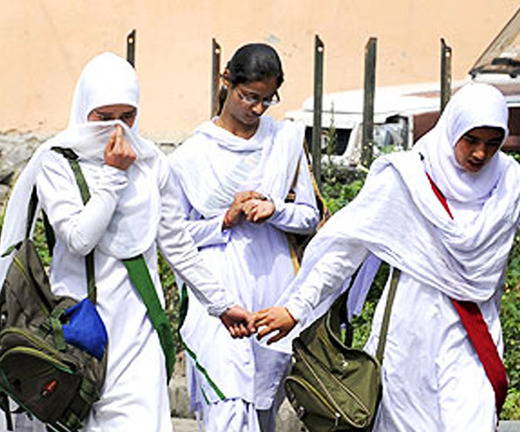 This period has also seen several new initiatives like introduction of the Beti Anmol scheme, creation of a Cancer Treatment & Management Fund for the poor and taking recourse to taxation measures to curb the menace of smoking. By now, about 8,500 girl students have been benefitted under the Beti Anmol Scheme. By the end of the current financial year, more than ten thousand girl students coming from the BPL families would have been provided financial assistance on their seeking admission in the 11th Class in any school. Such girl students were also exempted from making any contributions to the local funds of the schools. The female candidates applying for jobs before the PSC and SSRB were exempted from paying the prescribed application fee. A sum of Rs 30,000 was approved as financial assistance from the Government for performing marriage ceremonies of each of the orphan girls belonging to BPL families. A large number of anganwari centres were opened and the remuneration of the workers and helpers in these centres was increased.
This period has also seen several new initiatives like introduction of the Beti Anmol scheme, creation of a Cancer Treatment & Management Fund for the poor and taking recourse to taxation measures to curb the menace of smoking. By now, about 8,500 girl students have been benefitted under the Beti Anmol Scheme. By the end of the current financial year, more than ten thousand girl students coming from the BPL families would have been provided financial assistance on their seeking admission in the 11th Class in any school. Such girl students were also exempted from making any contributions to the local funds of the schools. The female candidates applying for jobs before the PSC and SSRB were exempted from paying the prescribed application fee. A sum of Rs 30,000 was approved as financial assistance from the Government for performing marriage ceremonies of each of the orphan girls belonging to BPL families. A large number of anganwari centres were opened and the remuneration of the workers and helpers in these centres was increased.
The Peace Dividends

On one occasion of Budget presentation when I had announced a slew of tax concessions for several sections of our society, particularly our farming brothers, our Hon’ble Chief Minister, Jenab Omar Abdullah Saheb had described them as ‘the peace dividends’.
This is indeed a very apt description of all such benefits to the people of the state who are focal to all the developmental and peace keeping operations of the present government. As the saga of peace and prosperity continues, I am committed to deliver more of such peace dividends.
The Farming Sector
Sometime back, I had stated in this august House that a smiling farmer is the most prominent symbol of economic strength. Believe me, Hon’ble Members; I have seen such a smile on the faces of the representatives of the farming community during my recent pre-budget consultations with them. All of them were highly appreciative of the recurring savings accruing to them on account of reduction in the cost of their agricultural inputs, particularly fertilizers and pesticides due to the abolition of taxes in this sector.
Last year, I had enhanced the Stamp Duty exemption limit on credits received from the commercial banks by six times, from Rs 25,000 to Rs 1, 50,000 per Kissan Credit Card. The growth of credit flow to the agriculture sector during the last couple of years has been quite encouraging. In order to give further boost to agricultural production through enhanced flow of credit to this Sector, I propose to double the present exemption limit of rupees one lakh and fifty thousand per KCC to rupees three lakh per KCC for purpose of exemption from Stamp Duty. I propose to apply this enhanced limit in Stamp Duty concession to the holders of the Artisan Credit Cards as well.
I have fully exempted all bio-fertilizers and chemical fertilizers from the levy of VAT and Toll. The ‘bone-meal’ is also being increasingly used as fertilizer for its phosphate and potash contents as a cheaper alternative to expensive imported phosphates and potash. As such, I propose to exempt ‘bone meal’ from the levy of VAT as well as Toll on its import from outside the State.
Soil testing is a very essential part of the agricultural operations for determining the right types and quantities of fertilizers and soil nutrients, so as to economize on their costs and maximize the production. The Agriculture Department has set up a brick and mortar soil testing lab in each district.
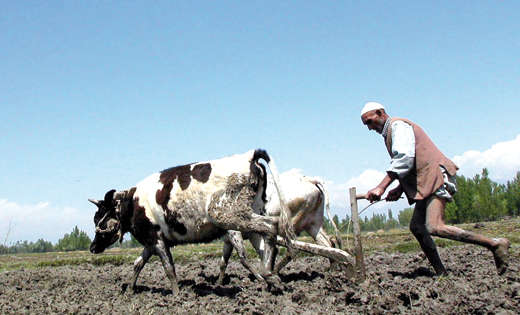 Besides, one mobile soil testing van is also being arranged in each district. The existing infrastructure shall be put to its optimum utilization to ensure that the largest possible number of farmers take the advantage of these soil testing labs, get their soil health cards and start economizing on their consumption of fertilizers.
Besides, one mobile soil testing van is also being arranged in each district. The existing infrastructure shall be put to its optimum utilization to ensure that the largest possible number of farmers take the advantage of these soil testing labs, get their soil health cards and start economizing on their consumption of fertilizers.
The Government has granted Toll exemption on the export of basmati rice from the state. With the changing trade pattern, now broken basmati rice grain is being sold in the name of ‘tootee basmati’. The ‘tootee basmati’ is also in good demand outside the State. Under its name of ‘tootee basmati’ it attracts levy of Toll at Lakhanpur.
As the basic objective of Toll exemption is promotion of its sale and extending additional financial benefits to the farmers, I propose to extend the Toll exemption on ‘tootee basmati’ as well from the next financial year.
I have earlier exempted import of rice bran and wheat bran from the levy of Toll as it is used for feeding the cattle. It has been brought to my notice that the husks of bran and pulses which are also used as cattle feed, attract the levy of such taxes. As the end use of these by-products is the same as bran, I propose to allow full exemption on import of these items also from the levy of Toll.
I have already exempted sale of honey from VAT. The ‘bee wax’ is a by-product of the bee keeping operations of our farming community. As such, I propose to exempt ‘bee wax’ also from the levy of VAT.
De-oiled cake which is a by-product of oil mills is already exempted from payment of VAT. It has been pleaded before me by the representatives of the farming community that the oiled cake which is a by-product of the cottage industry attracts VAT at the rate of 13.5%. The oil cake is a rich source for animal feed just like the de-oiled cake. I agree with this argument. As such, I propose to exempt oil cake as well from the levy of VAT.
I have earlier given exemption from VAT and Toll on several items of farm machinery and equipment. The village hand pump is not classified as farm machinery but is an integral part of many farms. I propose to exempt the hand pump also from the levy of VAT and Toll.
Micro irrigation has become a must for many crops which require critical irrigation in water scarcity areas. I have already granted tax refund facility on installation of drip and sprinkler irrigation facilities in the fields of the farmers. Looking into the size of the problem, a major thrust is needed in this area. I propose to keep a provision of Rs 2 crore in the next year’s BE to enable the Department to undertake a pilot initiative in this behalf.
Horticulture is becoming highly capital intensive in view of its critical input needs. This means increase in the risks to the crops on account of adverse weather conditions. There has been a growing demand from the farmers to provide insurance cover to the fruit and other cash crops.
The government intends to initiate a Weather Based Crop Insurance Scheme on a premium sharing basis between the farmers, the financing banks and the Government on a pilot basis to cover cash crops like apple, pear, cherry, mango, saffron and basmati at village panchayat level in convergence with the Crop Loan and Kissan Credit Card Schemes.
In order to provide exposure to our farming brothers about the developments taking place in the field of agriculture in the rest of the country, I propose a provision of Rs 50 lakh in the next year’s budget for organizing their ‘krishi darshan’ tours.
During my interactions with the farming community members, it has been urged by them that the investments in agriculture sector out of the CDF of the Hon’ble Members of the State Legislature deserve priority attention. I have great pleasure in communicating their suggestion to this August House. If the Hon’ble Members agree, the Planning & Development Department can modify the existing CDF guidelines to provide emphasis on the application of CDF towards the well deserving Agriculture Sector.
Export and Production of Fruit
| Export of fruit outside the State (lakh Metric tons) | |||||||
| S. No | Year | Production | Exports | ||||
| Fresh | Dry | Total | Fresh | Dry | Total | ||
| 1 | 2003-04 | 11.65 | 1.08 | 12.73 | 7.63 | 0.13 | 7.76(60.95) |
| 2 | 2004-05 | 12.18 | 1.14 | 13.32 | 8.2 | 0.14 | 8.34(62.61) |
| 3 | 2005-06 | 12.8 | 1.23 | 14.03 | 8.58 | 0.12 | 8.70(62.01) |
| 4 | 2006-07 | 13.74 | 1.3 | 15.04 | 7.35 | 0.15 | 7.50(49.87) |
| 5 | 2007-08 | 14.78 | 1.58 | 16.36 | 7.34 | 0.16 | 7.50(45.84) |
| 6 | 2008-09 | 15.26 | 1.65 | 16.91 | 11.01 | 0.16 | 11.17(66.06) |
| 7 | 2009-10 | 15.35 | 1.76 | 17.12 | 9.34 | 0.23 | 9.57 (55.90) |
| 8 | 2010-11 | 20.46 | 1.76 | 22.22 | 10.87 | 0.25 | 11.12 |
| 9 | 2011-12 | 19.32 | 2.29 | 21.61 | 10.11 | 0.19 | 10.3 |
| 10 | 2012-13 | 16.1 | 1.32 | 17.42 | 7.05 | 0.16 | 7.21 |
| 11 | 2013-14 (ending Nov., 13) | 18.55 | 2.61 | 21.17 | 7.02 | 0.18 | 7.2 |
Source: Economic Survey 2013-14
Budget Estimates (2014-15)
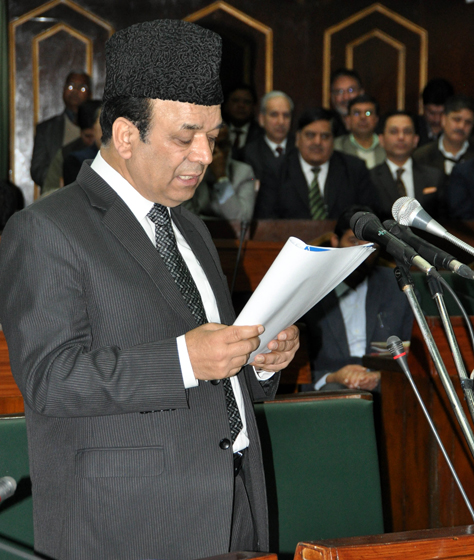 Before taking up the Budget Estimates for the next financial year, I would like to draw the kind attention of all the Hon’ble Members to a basic change introduced by the Planning Commission of India (PCI) in the formulation of State Annual Plans from the next financial year. The states have been receiving funds from various Ministries of the Government of India under a large number of Centrally Sponsored Schemes (CSSs). The issue of transfer of these CSSs to the states has been engaging the attention of the National Development Council in which all the states are also represented as members. The Planning Commission has now indicated that from the next financial year, the outlays hitherto received under the CSSs which have been regrouped into 66 schemes and also renamed in some cases, shall form part of the State’s Annual Plan outlay.
Before taking up the Budget Estimates for the next financial year, I would like to draw the kind attention of all the Hon’ble Members to a basic change introduced by the Planning Commission of India (PCI) in the formulation of State Annual Plans from the next financial year. The states have been receiving funds from various Ministries of the Government of India under a large number of Centrally Sponsored Schemes (CSSs). The issue of transfer of these CSSs to the states has been engaging the attention of the National Development Council in which all the states are also represented as members. The Planning Commission has now indicated that from the next financial year, the outlays hitherto received under the CSSs which have been regrouped into 66 schemes and also renamed in some cases, shall form part of the State’s Annual Plan outlay.
This August House is also aware that because of the forthcoming general elections to the National Parliament, the Union Government has decided to place an interim budget before the Parliament and seek only a ‘Vote on Account’ for a part of the next financial year. Because of this reason, the Planning Commission is currently not undertaking its plan formulation exercise for any of the states or the Centre.
Keeping in view these developments, the issue of projecting an appropriate plan size for the next financial year has been discussed at length with the Planning Commission at the official level.
Based on the parameters indicated by the Planning Commission officials and after assessment of the State’s resources for the next financial year, it has been decided to project a plan size of Rs11, 300 crore to the Planning Commission. I have included a plan size of Rs 11, 300 in my next year’s Budget Estimates accordingly. Going by the past trends, keeping in view the approved financial parameters of the Centrally Sponsored Schemes and based on the calculations as per the expected Scheme of Financing of the Plan, the Capital Plan Expenditure for the next financial year is projected as Rs 7,905 crore, exclusive of a demand of Rs 600 crore under PMRP.
The Plan Revenue Component is estimated at Rs 3,395 crore. The Scheme of Financing of the Plan (SOF) assumed by us shall undergo a change when the Planning Commission gives it formal nod to the State’s annual plan outlay some time after completion of the parliamentary elections and passing of the normal Union Budget.
The total projected budgetary receipts and the proposed expenditure are accordingly proposed to be adopted at Rs 43,543 crore in comparison to the current year’s RE of Rs 36,289 crore. On the receipt side, the breakup between the Capital and Revenue receipts is projected as Rs 4,322 crore and Rs 39,221 crore respectively.
I may explain the main items of the State’s own tax and non-tax revenue which are within our own domain.
State’s Tax Revenue
The total tax revenue of the State Government during the next financial year is estimated at Rs 7,496 crore. In comparison to the current year’s BE of Rs 6,700 crore, it shows an increased target of Rs 796 crore indicating a percentage growth of nearly 12%.
The main items of the State’s Tax Revenue are Value Added Tax or VAT inclusive of GST and the Service Tax levied under the J&K GST Act; Passenger Tax; Stamps Duty and Registration Fee; Toll and Excise Duty.
Our record of VAT collections has been extremely impressive. In comparison to the year 2008-09 when our total VAT collections were only Rs 1,836 crore, we hope to collect Rs 5,344 crore during the next financial year, indicating almost a threefold increase.
The collections on account of Taxes on Goods and Passengers are estimated at Rs 635 crore during the next financial year showing an increased target of about Rs 120 crore or 23% growth over the current year’s BE of Rs 516 crore.
The current year’s RE is Rs 559 crore. The corresponding figure for the year 2008-09 was only Rs 271 crore, that is, less than half of what we hope to realize in the current financial year.
The revenue from Excise Duty is estimated at Rs 462 crore during the next financial year over the current year’s BE figure of Rs 423 crore, indicating an increased target of about Rs 40 crore or around 10% growth on BE to BE basis.
Other targets of tax revenue are: Stamps & Registration Rs 324 crore; Taxes on Vehicles Rs 159 crore; Electricity Duty Rs 529 crore;
The realization of the Electricity Duty target would be dependent upon the actual realizations of the electricity charges from the consumers as against the targets given by the Planning Commission.
Non-Tax Revenue
The total non-tax receipts for the next year are estimated as Rs 3,560.57 crore. The main item of receipt is the fee from electricity consumers. In the current year the revised power receipts target has been adopted as Rs 2,840.60 crore. The next year’s target is being proposed as Rs 2,979.60 crore.
Other main items of non tax receipt are: Mining & Minerals Rs 60.10 crore,
Forestry Rs 69.52 crore, Irrigation Rs 58.98 crore, Water Supply & Sanitation Rs 49.50 crore
Expenditure
As stated earlier, the projected Plan expenditure is Rs 11,300 crore. An increase of
Rs 500 crore is being projected over the current year’s plan size, mainly to take care of the net increases in the committed plan revenue expenditure and expansion part in the State component. The expected net addition on account of transfer of CSSs to the State Plan is Rs 3,500 crore.
The breakup of the total budgetary expenditure of Rs 43,543 crore as between plan and non-plan is Rs 11,900 crore (inclusive of Rs 600 crore under PMRP) and Rs 31,643 crore respectively. The total capital component is estimated as Rs 10,595 crore. The balance amount of Rs 32,948 crore is proposed to be utilized to meet the revenue expenditure.
In the total Plan Budget of Rs 11,900 crore inclusive of PMRP, the breakup between Capital and Revenue expenditure is Rs 8,505 crore and Rs 3,395 crore respectively. The Revenue expenditure is expected to go up by about 19.33% over the RE for the current financial year on account of the committed expenditure as well as for meeting the future expansion needs.
On the Non-Plan side, the breakup between the Capital expenditure and the Revenue expenditure is Rs 2,090 crore and Rs 29,553 crore respectively. On the Capital side, the main item of expenditure is Rs 1,297 crore on account of repayment of the State loans.
I will briefly state some of the major items of non-plan revenue expenditure.
The expenditure on salaries and allowances of the Government employees will continue to be the biggest component of the State’s non-plan revenue expenditure. The next year’s BE contains a total provision of Rs 14,461 crore on this account, inclusive of a provision of Rs 700 crore to take care of two fresh DA installments which may become due from the 1st January and the 1st July
2014. On the advice of the Planning Commission, both these installments have been presumed at 6% each, though the actual incidence may be much higher.
The salary provision also includes a sum of Rs 842 crore on account of the fourth installment of the arrears of pay revision due to the retrospective implementation of the recommendations of the Sixth Central Pay Commission.
The next biggest item of non-plan revenue expenditure is on account of pension payments.
The expenditure on this account during the next year is estimated at Rs 3,980 crore, as against the current year’s RE of Rs 3,673 crore. Thus, the total expenditure on account of salaries and pension payments comes to Rs 18,441 crore. These expenditure estimates include a component of about Rs 290 crore on account of leave encashment which shall become payable to the employees due to retire during the financial year 2014-15.
The expenditure on account of purchase of energy is proposed to be kept at Rs 3,668 crore as against the RE of Rs 3,336 crore in the current financial year. The expenditure on account of payment of interest on the Government borrowings is estimated at Rs 3,470 crore as against the figure of Rs 3,300 crore in the current year’s RE.
I wouldn’t like to take more time of the Hon’ble Members in providing detailed features of the next year’s State Plan. However, mentioning of some broad features may be quite appropriate for this occasion.
The next year’s focus of planning shall continue to be on the key areas of Agriculture & Irrigation including Horticulture, Floriculture and Sericulture, Tourism and Industry. Allocation of Rs 321.40 crore is proposed for the Agriculture & Allied Departments including Animal & Sheep Husbandry, Floriculture and Cooperation. Allocation of Rs 179.74 crore is proposed for the Irrigation, Flood Control & PHE Sector. Tourism Sector is proposed to get an allocation of Rs 106.20 crore.
Allocation of Rs 179.82 crore is proposed for the Industries Sector including Labour & Employment.
The thrust on the Education and Health Sectors for the adults, women and the children shall be maintained. These Sectors are proposed to receive allocations of Rs 734.66 crore and Rs 310.45 crore respectively.
For ensuring inclusive development, specific allocations for development of border areas, bad pockets, backward regions, SC & ST, BC are being proposed. Women & Child Welfare schemes are proposed to be given their due share. Allocation of Rs 332.34 crore is proposed under the Social Welfare Sector including the specific allocations of Rs 49.73 crore for Tribal Sub Plan and Rs 27.43 crore for the Scheduled Castes, Gujjar & Bakarwal, BC and Pahari Speaking People. Under the ICDS Mission Mode, an allocation of Rs 40 crore has been proposed including a sum of Rs 20 crore for creation of additional 1000 anganwari centers in a phased manner.
The Power Sector is proposed to receive an allocation of Rs 396.21 crore together with Rs 10.25 crore for the Transport Sector. The PWD (R&B) Sector is proposed to receive Rs 525.28 crore. Allocation of Rs 423.62 crore is proposed for the Housing & Urban Development Sector. An allocation of about Rs 65 crore has been proposed for the Rural Development Sector.
For regularization of the Rehbar-e-Zirat as per the Government’s commitment, I have earmarked a provision of Rs 25 crore in the next year’s Budget.
A provision of Rs 484.42 crore is proposed under the Sarva Shiksha Abhiyan. An additional provision of Rs 135.27 crore is proposed under the Rashtriya Maadhyamic Shiksha Abhiyan or RMSA.
For the schemes taken up under the award of the Special Task Forces, I have separately earmarked Rs 50 crore for Jammu, Rs 25 crore for Ladakh and Rs 25 crore for Kargil regions.
During my last year’s budget, I had proposed to pay a financial assistance of Rs 30,000 at the time of marriage of every orphan girl belonging to a BPL family. I have accordingly kept a provision of Rs 3 crore in the Revised Estimates for the current financial year. A similar provision has been proposed by me in the next year’s Budget Estimates.
The total allocation for the District Plans is proposed at Rs 2,054 crore. I have earmarked a provision of Rs 10 crore for taking care of the critical needs of bad pockets. I have also proposed a provision of Rs 148 crore under Border Area
Development Programme (BADP).
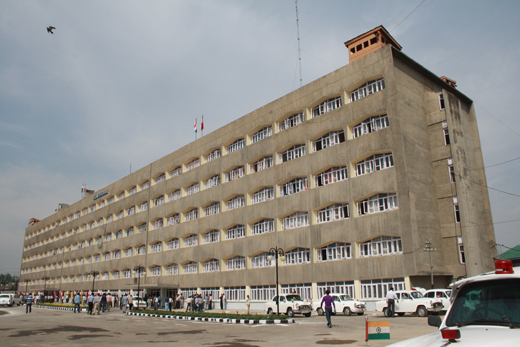 Our Hon’ble Chief Minister, Janab Omar Abdullah Saheb had once declared that for ensuring the success of SKEWPY, sky would be the limit as for as the Government funding is concerned. Now that this Programme has taken off and is being well received by our educated unemployed youth, I propose to earmark an allocation of Rs 120 crore for meeting the requirements of the Seed Capital Fund, Youth Startup Loan Scheme, Women Entrepreneurs and the VSA in the next year’s budget.
Our Hon’ble Chief Minister, Janab Omar Abdullah Saheb had once declared that for ensuring the success of SKEWPY, sky would be the limit as for as the Government funding is concerned. Now that this Programme has taken off and is being well received by our educated unemployed youth, I propose to earmark an allocation of Rs 120 crore for meeting the requirements of the Seed Capital Fund, Youth Startup Loan Scheme, Women Entrepreneurs and the VSA in the next year’s budget.
Sarpanchs and Panchs:
Last year, I had proposed payment of honorarium to the sarpanchs and the panchs of the panchayats. The rates of honorarium were finally approved by this August House. I have accordingly included a provision of Rs 46 Crore in the current year’s Revised Estimates for meeting this new item of expenditure. A similar provision has been proposed by me in the next year’s Budget Estimates.
I had also offered to prepare and implement an insurance scheme for the members of the panchayats. An insurance scheme has been accordingly prepared and put to tendering. I have accordingly included a provision of Rs 63.44 lakh as the Government contribution in the next year’s Budget Estimates.
Release of DA installments
As the Hon’ble Members are aware of, we have been releasing two fresh installments of DA to all the State Government employees and pensioners effective from the first of January and the first of July every year. While discussing the position of the current year’s resources of the State with the Planning Commission of India, they had advised us to keep provision in the budget at the rate of 6% each for the two installments. This August House had voted a provision of Rs 700 crore for meeting the cost of these DA installments for the employees and the pensioners accordingly.
However, we had to sanction the first DA installment effective from the first January 2013 at the rate of 8% which consumed near about 60% of this provision. Additionally, we have to accommodate the requirement for the second installment at the rate of 10% for eight months of the current financial year. The Government has approved release of this second installment of DA at the rate of 10% in favour of all the State Government employees and pensioners retrospectively from 1st July 2013.
I have reworked and projected the requirements of salary and allowances in the Revised Estimates accordingly.
Revised Estimates (2013-14)
This August House had voted a total budgetary expenditure of Rs 38,068 crore. As per the Revised Estimates, the total expenditure is now expected to come down to Rs 36,289 crore. The revenue component is now estimated at Rs 27,617 and the capital component is estimated at Rs 8,672 crore.
Out of the total capital component of the expenditure, a sum of Rs 6,776 crore is proposed to be spent on the Plan inclusive of the provisions under PMRP. The Capital expenditure proposed on the non-plan items is Rs 1,896 crore inclusive of a sum of Rs 1,231 crore as repayment of the State loans. This figure is the same as that proposed in the BE.
Out of the total estimated revenue expenditure of Rs 27,617, the expenditure on salaries and allowances is estimated now at Rs 12,117 crore. The expenditure on pensions is estimated at Rs 3,673 crore which is Rs 73 crore higher than the BE. The expenditure on purchase of energy is proposed as Rs 3,336 crore. The expenditure on payment of interest on Government borrowings is estimated in RE as Rs 3,300 crore which is the same as that provided in BE.
For The Hospitality Sector
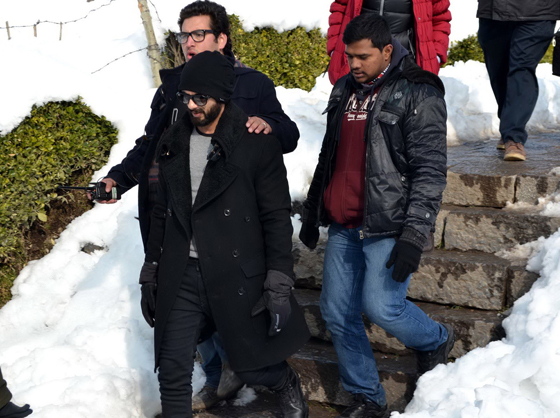 For promotion of tourism in the state, the government has prepared 152 projects so far under CSSs and PMRP at an aggregate cost of Rs 628.86 crore. Out of these 152 projects, 75 projects have been already completed of which 68 were completed only during the last five years.
For promotion of tourism in the state, the government has prepared 152 projects so far under CSSs and PMRP at an aggregate cost of Rs 628.86 crore. Out of these 152 projects, 75 projects have been already completed of which 68 were completed only during the last five years.
Implementation of the remaining 77 projects is progressing. The cumulative expenditure ending 2012-13 comes to Rs 327 crore. The current annual allocation under the state plan is in the vicinity of Rs 100 crore. The government has sent 53 projects for development of ‘tourist villages’ to the central government. Out of them, 43 projects have been approved so far and 27 of them have been already completed.
During the year 2010-11, the government approved three Mega Tourism Projects at a total cost of Rs 77.50 crore. They are: Trans Himalayan Cultural Centre, Leh; Mega Tourist Circuit from Naagar Nagar to Watlab in Kashmir and Reconstruction & Restoration of Mubarak Mandi Heritage Complex at Jammu. About one third of the funds requirements stands released for execution of these projects and the works are in progress.
Besides, funds have also been released in favour of the implementing agencies for the works on the restoration of Raja Amar Singh Palace, Dogra Arts Museum and Raja Ram Singh Mahal costing about Rs 50 crore. Three additional projects: development of Baitul Zaireen at Shahdara Sharif, Ransoo at Reasi and Dalsar Lake at Ramnagar, costing Rs 16 crore have also been taken up and expenditure of Rs 10.15 crore has been incurred on them ending December 2013. Rs 8 crore are being spent for Heritage Conservation of old Srinagar City including the Jama Masjid area, Idd Gah and the River View Front.
The ropeway to Makhdoom Sahib has been commissioned. The contract for execution of works on the ropeway from Peerkho to Shahbad via Mahamaya forest, presently estimated to cost Rs 40 crore has been allotted. Another ropeway from Kud to Patnitop via Sangot is to be taken up in private sector on BOT basis. The statutory environment clearences are progressing and the implementation of both of these projects is likely to commence in near future. The project for improvement of Raghu Nath Bazar is in progress. The projects for development of Suchet Garh and Mata Sukrala Devi Shrine have been completed. The first phase of Sidhra Golf Course estimated to cost Rs 37.39 crore has been completed and commissioned.
Incentives for the Tourism Industry
In order to give boost to our tourism industry, the government announced an extensive package of incentives for all the segments connected with the promotion of tourism in the State. This package is going to expire on 31st December 2014. In order to maintain continuity in the structure of the incentives, the government proposes to make this package co-terminus with the financial year and further extend it up to 31st March 2015.
For strengthening the hospitality industry, I have been extending tax concessions to the hotels and the restaurants from time to time. Last year I brought down the VAT rate on food items from 13.5% to 5%.
Another very important concession which was granted by me to the hotels and guest houses is the total exemption from the Hotel Tariff Tax on the room rent collected by them. This concession is going to expire on the 31st March 2014. In order to provide further stability to the hospitality industry in the State, I propose to extend this concession by another year, up to 31st March 2015.
| Tourist arrivals (Number) | ||||
| Year | Kashmir Valley | Jammu | Ladakh | |
| Amarnath | Domestic/ Foreign | (Mata Vaishno Devi) | Domestic/ Foreign | |
| 2008 | 498075 | 572100 | 6576000 | 72000 |
| 2009 | 373419 | 601250 | 8235064 | 78573 |
| 2010 | 458046 | 736448 | 8749000 | 76055 |
| 2011 | 634000 | 1314432 | 10115232 | 179204 |
| 2012 | 621000 | 1308765 | 10394000 | 178750 |
| 2013 | 353969 | 1171130 | 9287871 | 137650 |
Source: Economic Survey, J&K 2013-14
For The Industry
Exemption from VAT
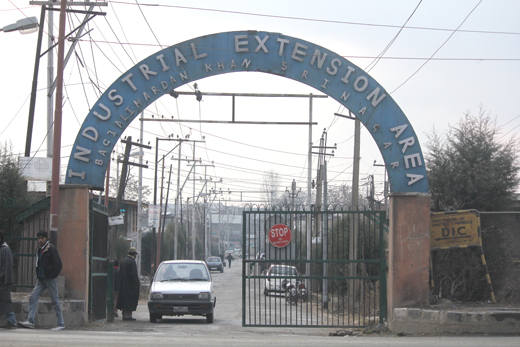 As a conscious promotional policy, the government has been granting exemption to our local industry from payment of Sales Tax so as to give them a competitive edge in the open market.
As a conscious promotional policy, the government has been granting exemption to our local industry from payment of Sales Tax so as to give them a competitive edge in the open market.
After VAT replaced the Sales Tax, the incentive of sales tax exemption was converted into VAT remission. Lately, introduction of a more comprehensive national level Goods and Services Tax (GST) which would assimilate Central Excise Duties, CST and VAT etc has become the subject matter of a prolonged debate. With the hope of developing a consensus amongst the States, the Union Government has been expressing its intentions to bring in the new legislation in the Parliament for quite some time. I have been accordingly extending the benefit of VAT remission to our industry year after year for the last five years. This benefit is currently available up to 31st March 2014.
Some time back, I had got an exercise conducted about the financial implications of this concession. The figure came to around Rs 500 crore per annum. With the passage of time, this amount might have increased at least by 50% to Rs 750 crore. In the interest of sustaining employment in the State, I consider this sacrifice worth its objective. As the enforcement of GST Act with effect from the 1st of April 2014 does not appear to be possible, I propose to extend the concession of VAT remission to the local industry by another year that is up to 31st March 2015 or till such date on which the proposed GST comes into force, whichever happens earlier.
Cashless system of VAT remission
The industrial units are entitled to the remission of VAT on local purchase of raw materials as a part of the package of incentives. On their purchases from SICOP, the unit holders have been paying VAT which is subsequently refunded in cash to them. This process involves delays and generally creates a backlog. In order to get over this recurring problem, I propose to introduce a cashless system of VAT remissions on such purchases from the next financial year.
In the meanwhile, I propose to clear the previous backlog of VAT remission in a phased manner, in a two years’ time frame.
Revival of sick units
Revival of sick units is essential to give a healthy look to our industrial sector as also for ensuring optimal utilization of the existing resources and investments which are locked in the sick units.
As announced by me sometime back, two Task Forces separately for Kashmir and Jammu Divisions were constituted by the Government to undertake this operation. They have done some preliminary work of surveying the extent of sickness in industry and identifying such units where the entrepreneurs are willing to take up the challenge of their revival.
Some unutilized amount from a corpus of funds for revival of sick units is already lying with SIDCO for this purpose. I propose to supplement this corpus suitably during the next year as per actual need. In the meanwhile, the Task Forces shall be asked to prepare their action plans early for approval of the Government.
Our industry needs assured supply of quality power in order to keep its production costs low and remain competitive in the market. One way of assuring this is to improve their existing power supply systems for the industrial estates. Presently funds are being provided both under the State Plan and the CSS for upgrading the infrastructure in the Industrial Estates.
I will be asking the I&C Department to seriously explore the possibilities of earmarking a portion of these funds for upgrading the power supply system till more funds are arranged by us exclusively for this purpose.
Due to persistent follow up of the Government, the Union Government has finally agreed that the concession in the Central Excise Duties shall be available to the industrial units located within our State on their second substantial expansion as well.
Toll on weight of empty containers
We have an Inland Container Depot (ICD) within the Industrial Estate at Bari Brahmana. Another similar ICD is being developed within the Industrial Estate at Rangreth for facilitating direct exports from the State. It has been argued by the industry that hiring of containers from the Container
Corporation of India located at Jallandhar and paying for cartage of the empty containers along with Toll on their weight works out to be costlier than adopting the common mode of carrying the commodities to and fro the ports of export/ import.
The fully empty containers are exempt from Toll at the time of their entry into the State. I have also exempted such fully empty containers leaving the state from the levy of Toll. A problem has arisen in case of laden containers, due to including the weight of the container as part of the goods contained therein for purpose of calculating the Toll on goods. I propose that the weight of the container shall be exempt from the levy of Toll while the containers move to and fro.
VAT on shawls
 The local handmade shawls are exempt from levy of VAT. The machine embroidered shawls which mostly come from outside the state are becoming increasingly popular amongst our sisters.
The local handmade shawls are exempt from levy of VAT. The machine embroidered shawls which mostly come from outside the state are becoming increasingly popular amongst our sisters.
These shawls attract VAT at the rate of 13.5% which has become a major issue of legal debate. In order to conclude this debate, and as a special peace dividend to my sisters, I propose to reduce the rate of VAT on such shawls to 5%.
Amnesty from VAT defaults
A few years back, I had announced a onetime amnesty scheme for such of the dealers who couldn’t pay their VAT dues in time and had gone into arrears due to some genuine reasons. My attention has been drawn to some still pending cases where the dealers are willing to clear their arrears provided that the penalties are waived off.
As the earlier amnesty scheme is undergoing a judicial scrutiny on a PIL, our effort shall be to prove that such an amnesty scheme can meet the public interest criterion. Further line of action shall be decided thereafter.
Limit for compulsory audit of accounts by the dealers:
The Rules provide that the accounts of the dealers with a turnover beyond a prescribed limit should be compulsorily audited by a qualified auditor before filing of the VAT Returns. Presently, such limit is Rs 60 lakh. Keeping in view the increase in the turnover of the dealers on the whole, I propose to increase this limit to Rs 100 lakh (Rs one crore) from the current financial year for which the Annual Return shall become due after the first of April 2014.
A threshold limit of Rs 7.5 lakh per annum is prescribed for the small dealers who are exempt from depositing any VAT and filing any VAT Returns. Keeping in view the inflation in the cost of trade goods, I propose to increase this limit to Rs 10 lakh. On similar considerations, the Turnover Tax (TOT) limit is also proposed to be enhanced to Rs 25 lakh per annum.
Constitution of an Advisory Committee on VAT implementation
A very strong plea has been made before me that the process of implementation of VAT and other related laws may be made more participatory in nature and a regular forum of interaction should be provided so as to make the administrators and the dealers understand each other’s points of view on various legal and procedural issues on a regular basis and to extend cooperation in smooth enforcement of all the statutory provisions. I don’t see any objection in conceding this demand. I propose to constitute such a standing forum in addition to the Grievance Redressing Mechanism which is already in force.
| Year-wise achievement under Large & Medium Sector | |||
| Year | No. of Units Registered | Employment Generated |
Investment (Rs. in Crores) |
| Up to 2008-09 | 51 | 18756 | 2236.04 |
| 2009-10 | 6 | 4443 | 540.83 |
| 2010-11 | 7 | 2090 | 430.35 |
| 2011-12 | 16 | 2795 | 751.11 |
| 2012-13 | 22 | 3296 | 946.97 |
| 2013-14 (Ending 10/2013) | – | – | – |
| Total | 102 | 31380 | 4905.30 |
More Exemption From VAT
I have been keeping some essential commodities, which are atta, maida, suji, besan, pulses, paddy and rice etc in the list of VAT free items. Some States have brought these items under the tax net. However, the rising prices and the fact that ours is a tourist state, I have kept these commodities out of the tax net on year to year basis. Presently, this exemption is going to expire on 31st March 2014. On these very considerations, I propose to continue these commodities in the list of VAT free items for another period of one year. The loss of revenue on this account is estimated at about Rs 250 crore.
With the multifold increase in the number of dealers and growth of business which is evidenced by ever increasing collections of VAT and other taxes collected by the Commercial Taxes Department, a need has been felt to go far reorganization of the Department which may enable us to cover new districts and overloaded areas by independent assessment circles. The proposed reorganization may also enable us to keep Lakhanpur Check Post open for import of taxable goods almost on a round the clock basis. The Check Post is already functioning on 24X7 basis on the Toll side.
Exemptions from Entry Tax
In consideration of smooth implementation of projects under Mega Flagship
Schemes for which contracts were fixed on global tendering basis, exemption from payment of Entry Tax was granted to the successful bidders on the import of plant & machinery and material into the State as a matter of policy. However, it was expected that the contractors would give preference to the locally available industrial products and other material. This expectation hasn’t been met to the expected level and the concession has reportedly worked to the detriment of the local industry. In order to rectify this situation, I propose to revisit the prevailing system of exemptions from payment of Entry Tax and try to relate the concessions to the quantum of goods locally purchased by the contractors. The Committee of Officers which is currently looking into the entire package of industrial incentives as announced by me during the last budget session shall also look into the issues related to the Entry Tax exemptions and suggest appropriate remedies.
New taxation measures
During all my previous budgetary proposals, I have refrained from introducing any new taxes as that would have increased the burden of the common man. The rates of Toll have been revised on a few occasions to adjust for inflation and a few Services have been brought under the tax net. In comparison, the list of items on which tax relief has been given from time to time is far larger.
The taxation exercise undertaken by me during all these years had a well thought out plan behind it with the aim of giving new dimensions to the economy of the State and accelerating its growth. The taxation plan has been gradually unfolded and steadily implemented by me through the past five years. The results are before the Hon’ble Members and the civil society of the State to see for themselves. For illustration, I have briefly mentioned the rates of growth of economy as measured by its growing GSDP and Per Capita Income and high rate of growth in tax revenue realizations.
I feel fully satisfied that the tax structure has come to a stable level where it can be allowed to stay for another year. As such, I do not, repeat do not, propose any changes in the existing rates of taxes on any commodities or services, nor intend to bring any new service under the taxation net for the next financial year.
More for the Youth
A very important component of SKEWPY is the District Employment and Counselling Centre.
Right in the beginning of the Programme, the Government had authorized the requisite funds for the construction of DECC buildings in all the districts. The construction part of these buildings is about to be completed in most of the districts. The Government intends to start the counselling, education, awareness, training and hand-holding programme for our educated unemployed youth from these DECC buildings as per the conceptual plan which is part of the SKEWPY document.
In the meanwhile, the Government has accomplished a major achievement by recruiting about 57000 youth in the Government jobs. About 13000 more youth are likely to be recruited in the next about two months. There is a backlog of vacancies already referred to the recruiting agencies. In this manner, the goal of recruiting one lakh youth in the Government jobs may well be exceeded during the course of the next financial year.
Beti Aur Bhi Anmol
 In March 2011, I had presented the Beti Anmol Scheme before this August House and it had received overwhelming support of the Hon’ble Members. The Scheme provides for the financial assistance of Rs 5000 to be provided by the Government which is deposited in the name of each of the girl student hailing from a BPL family at the time of her securing admission in the eleventh class. The Scheme presently applies to only 97 Blocks which have been identified as Educationally Backward.
In March 2011, I had presented the Beti Anmol Scheme before this August House and it had received overwhelming support of the Hon’ble Members. The Scheme provides for the financial assistance of Rs 5000 to be provided by the Government which is deposited in the name of each of the girl student hailing from a BPL family at the time of her securing admission in the eleventh class. The Scheme presently applies to only 97 Blocks which have been identified as Educationally Backward.
I propose to enhance the amount of financial assistance from Rs 5000 to Rs 10000 from the next financial year. Besides, I propose to extend the benefits of the Scheme to the girl students hailing from the BPL families living in all the Blocks of the State.
A bold initiative for PSEs
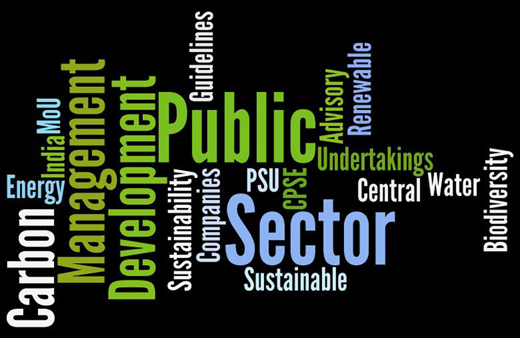 I have made a mention of the Government’s focused attention to bring in improvements in the performance of our PSEs. Most of the losses making PSEs have been surviving on the annual budgetary support which is given by the Government in the shape of loans. With no capacity to service these loans, their balance sheets now show huge accumulated liabilities both on account of the principal and the interest accrued thereon. There is now absolutely no possibility of repayment of these loans. As the accounts of these PSEs are in arrears, the correct position of these liabilities is not known. As per one exercise done in this behalf, such liabilities may exceed Rs 2000 crore.
I have made a mention of the Government’s focused attention to bring in improvements in the performance of our PSEs. Most of the losses making PSEs have been surviving on the annual budgetary support which is given by the Government in the shape of loans. With no capacity to service these loans, their balance sheets now show huge accumulated liabilities both on account of the principal and the interest accrued thereon. There is now absolutely no possibility of repayment of these loans. As the accounts of these PSEs are in arrears, the correct position of these liabilities is not known. As per one exercise done in this behalf, such liabilities may exceed Rs 2000 crore.
In order to give these PSEs a fresh lease of life, I propose to make them debt free as a onetime exercise by writing off these accumulated liabilities. Likewise it is proposed to convert the pending plan loans into equity capital after proper examination in each case. After the PSEs start with a clean slate, they will be expected to focus on other areas of improvement.
For The SHGs
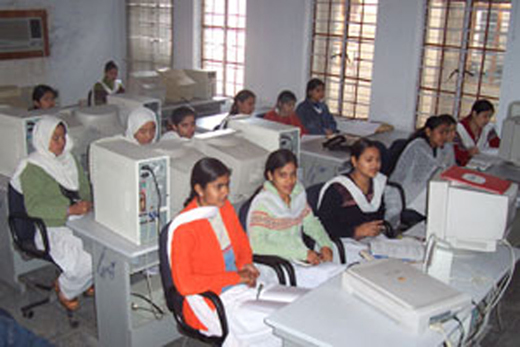 The J&K Women’s Development Corporation has created a good success story of the Self Help Group (SHG) of girls and women engaged in preparation of jute bags for the yatris of Shri Mata Vaishno Devi Shrine. It has initiated promotion of similar SHGs for other areas as well.
The J&K Women’s Development Corporation has created a good success story of the Self Help Group (SHG) of girls and women engaged in preparation of jute bags for the yatris of Shri Mata Vaishno Devi Shrine. It has initiated promotion of similar SHGs for other areas as well.
For expanding this activity in a big way through all the districts, I propose to allocate a sum of Rs 3.50 crore to the Corporation in a phased manner for promoting 100 SHGs in each district with a total targeted coverage of 44000 women members.
To the Brave Old Soldiers
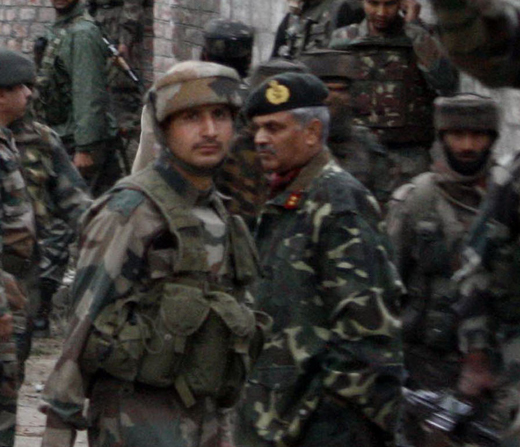 Our War Veterans are presently in receipt of financial assistance of Rs 1500 per month from the Government. I propose to increase this rate of financial assistance to Rs 3,000 per month. I have accordingly proposed a provision of Rs 2.30 crore in the BE for the next financial year for this purpose.
Our War Veterans are presently in receipt of financial assistance of Rs 1500 per month from the Government. I propose to increase this rate of financial assistance to Rs 3,000 per month. I have accordingly proposed a provision of Rs 2.30 crore in the BE for the next financial year for this purpose.
Kashmiri Migrants
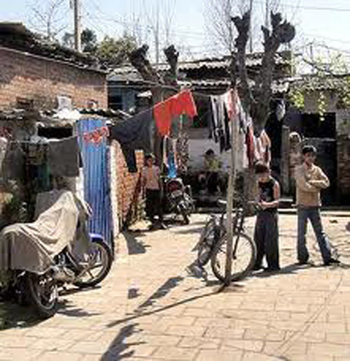 I cannot complete my speech without remembering my Kashmiri Pandit brothers and sisters without whom the composite culture of Vitasta and Jehlum in Kashmir valley continues to be incomplete. We are ceaselessly working, and shall continue to work for their safe return to Kashmir with honour and dignity. I have included a provision of Rs 67 crore in the current year’s RE and a provision of Rs 69 crore in the next year’s BE for the programme related to their return to Kashmir.
I cannot complete my speech without remembering my Kashmiri Pandit brothers and sisters without whom the composite culture of Vitasta and Jehlum in Kashmir valley continues to be incomplete. We are ceaselessly working, and shall continue to work for their safe return to Kashmir with honour and dignity. I have included a provision of Rs 67 crore in the current year’s RE and a provision of Rs 69 crore in the next year’s BE for the programme related to their return to Kashmir.
As an interim device the Government has also created special government jobs and made special recruitments of the youths from their community for experiencing the environment of living and serving in Kashmir Valley. More such posts shall continue to be filled up in near future.
In the meanwhile, I have kept a provision of Rs 183.24 crore for the salary of migrant employees and Rs 141 crore as cash assistance for other migrant families in the next year’s budget. The medical insurance scheme for the migrant families proposed by me quite some time back hasn’t taken off so far. However, my offer for extending financial assistance for this purpose shall continue for future as well. Finding the requisite funds for this purpose during the course of the year shall be no problem at all, if the proposed medical scheme takes off.
For AIDS & Cancer Victims
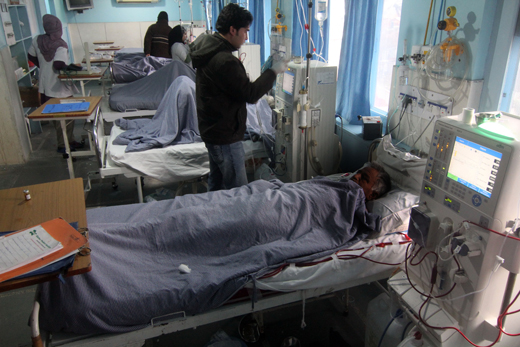 The Government identified the unfortunate persons including the orphaned children who have been diagnosed as victims of AIDS/ HIV. Presently, they do not receive any assistance from the Government. In a first time initiative, I propose to make a specific annual allocation of Rs 1.40 crore beginning from the current financial year itself to provide financial assistance to them.
The Government identified the unfortunate persons including the orphaned children who have been diagnosed as victims of AIDS/ HIV. Presently, they do not receive any assistance from the Government. In a first time initiative, I propose to make a specific annual allocation of Rs 1.40 crore beginning from the current financial year itself to provide financial assistance to them.
I also propose to provide a sum of Rs 2 crore to be given as grant in aid to the Cancer Treatment & Management Fund which is helping the needy and the poor patients suffering from cancer.
Conclusions
As I mentioned in the beginning, presenting six Government Budgets in a row is a record in itself. However, more important than this number is the quality and efficacy of the budgetary initiatives which have to be judged by their lasting impact made on the fiscal management of the State.
Actions always speak louder than the words. Real appreciation is that which comes from the critiques; and who would be a better critique of the State’s performance in financial management and accounts than the Principal Accountant General of the State, the Planning Commission of India, the All India State Finance Ministers Empowered Committee, the National Finance Commission and the Union Finance Ministry who have all recognized the State’s outstanding performance in these areas.
I am sure that most of the Hon’ble Members sitting in this August House shall agree with them. Even the Hon’ble Members sitting in opposition in this August House may find it difficult to ignore the unanimous opinion of these institutions, even if they may not like to admit it publicly.
Having said this, I would like to reiterate that as far as the service to the cause of the State’s welfare is concerned, we would continue to vigorously pursue the new ideas and methods; and to further reinforce our solid commitment to steer the State onto the path of peace, progress and prosperity.
With these submissions, I commend the Annual Financial Statement 2014-15 to this August House.
The Budget In Class Room
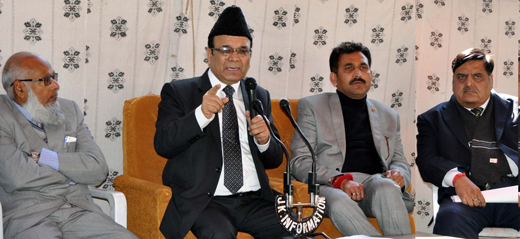 Budget of a state has three main parts:
Budget of a state has three main parts:
- The Consolidated Fund is the source for all the “usual” budgetary transactions whether of capital, revenue or loan nature. State Tax and Non-Tax revenues are entered into the Consolidated Fund and any expenditure which is to be met from the Consolidated Fund must be voted by the state legislature. Expenditures of ‘Charged’ nature are also met out of the Consolidated Fund.
The Consolidated Fund comprises of two parts a) the revenue account; and b) the capital account. The revenue account comprises expenditures covering the routine administration of the State, such as wages, salaries, maintenance and repairs, telephone expenses, day to day office running expenses and other overheads. Expenditures relating to the creation of assets – and this includes most (but not all) of Plan expenditure – are in the Capital account.
Revenue receipts are all those incomes which do not incur repayment liability. These include, in addition to the State’s own revenues, grants from the Central Government for the financing of State Plans, as well as non-plan grants.
Capital receipts include internal debt; loans from the Center and the State’s recovery of its own loans advanced to State Corporations, Co-operative Societies, etc., and are entered in the capital account. On the outlay side of the capital account, there are expenditures corresponding to the State’s own investment outlay and disbursements, which are comprised of repayment of State public debt and the loans and advances made by the State to the various entities. Thus, both the capital and debt portions of the Consolidated Fund are under the Capital budget.
- The Public Account includes those funds which do not rightly belong to the state but which the state holds in trust for other entities. This would include such items as deposits from Municipal Corporations, pension fund accumulations of the employees’ provident fund, and reserve and depreciation funds. It could rightly be characterized as the fund for which the state acts as “banker”.
- The Contingency Fund, as its name implies, is a fund for emergency use. It does not, in fact, contain any “real” money, but is an accounting figure that is included in the budget to cover generally the decretal amounts and other unforeseen emergent expenditures. Expenditure from the Contingency Fund can be made with Cabinet consensus alone and hence have the advantage that the budgetary procedure – involving legislative approval – is circumvented; albeit the seal of legislature subsequently to the expenditure thus incurred is a must. The monetary ceiling of Contingency Fund in most states is raised every few years through the budgetary process.
REVENUE RECEIPTS:
All those receipts for which the State has no re-payment liability and which are used to finance items of revenue expenditure. They consist of State tax revenues, non- tax revenues and grants from the Central Government.
Revenue sharing is a built-in feature of the Indian fiscal scene. The Indian Constitution assigns to the State and Central Governments specific expenditure responsibilities – Irrigation, Power, and Agriculture, among others, are the sectors of State responsibility, while Defence, Posts and Telegraphs, Railways etc. fall in the Centre’s domain.
Similarly, a breakdown has been made in the case of tax revenues, where many taxes, in the interests of efficiency and uniformity, are assigned to the Central Government and they are States enjoined from taping these sources.
Share in Central Taxes represents the automatic revenue sharing, known as devolution, which all States receive. The States receive percent of the net tax revenues of the Centre. The proportion, in which these taxes are to be shared between the Centre and the States and amongst the States, is determined by the Finance Commission, a statutory body.
Expenditures are classified under two headings: a) revenue expenditures; and b) capital expenditures.
The terms ‘revenue expenditures’ and ‘current expenditures’ are used interchangeably just as the terms ‘capital expenditures’ and ‘investment’. The correlation, however, is not exact. There is some investment expenditures on revenue account (basically capital expenditures), which are required for carrying out general administration of the State, such as housing for civil servants. Likewise, current expenditures shown up on the capital account. Formally, the difference between revenue and capital expenditure is determined on the basis of whether the expenditures are financed from revenue or capital receipts.
Plan expenditures may be either revenue or capital expenditures, since the expenditures of a non-capital nature are financed through Plan during the Plan period (they become Non-Plan committed expenditures at the termination of the Plan); but they are always “developmental”.
Revenue Budget: It is the revenue expenditure that takes place from this budget. Salaries of government employees and military staff, perks for ministers, office furniture, grants to local bodies, subsidies, interest to be paid on loans taken, and pensions are all accounted for here and referred to as revenue spending. Any expenditure for the normal running of the Government, which does not lead to the creation of assets, is called revenue spending. This spending must be financed from revenue receipts, i.e. revenue that the Government earns. The Government earns revenue in the form of taxes (corporate, income), duties (excise, custom etc.), receipts, fee and interest and dividends (if the Government makes investments).
Capital Budget: It is the capital expenditure and it refers to the money spent on creating assets (roads, highways, and dams), buying land or building, purchasing machinery and equipment. Loans from the Centre to various institutions or Government-run companies are clubbed here, too. Also included are any investments made by the Government in shares or other such instruments. This spending is financed from capital receipts, the money that the Government gets from loans. The loans can be from the public (market loans), from the Reserve Bank of India (the country’s Central Bank) or from financial institutions.
Finance Bill: Finance Bill consists the government’s proposals for the imposition of new taxes, modification of the existing tax structure or continuance of the existing tax structure beyond the period approved by the parliament.
Capital Receipts include loans raised by the State from the market, borrowings from RBI and other institutions, loans from the Centre, receipts from special securities issued to NSSF and the State’s recovery of its own loans and proceeds from disinvestment of Government’s stake in Public Sector Undertakings, all form part of Capital Receipts.
Budget Deficit, the conventional deficit, is the difference between total expenditure and total receipts and has to be zero in the absence of monetization, State Governments have no access to the monetization route and as such Budget Deficit in their case ought to be zero.
Fiscal Deficit is the difference between aggregate disbursements net of debt repayments AND recovery of loans and revenue receipts and non-debt capital receipts.
Primary Deficit is Fiscal Deficit net of ‘Interest Payments and Debt Servicing’ under Non-Plan.
Revenue Deficit is the difference between Revenue expenditure (Plan / Non-Plan) and Revenue Receipts (Tax / Non-Tax).
Budget Surplus / Fiscal Surplus / Revenue Surplus / Primary Surplus are the terms just opposite of such ‘Deficit’ terms.
Balance from Current Revenues (BCR) is the difference between Revenue Receipts and the sum total of all Plan grants and Non-Plan Revenue Expenditure.
Aggregate Disbursements include (i) Revenue Expenditure (ii) Capital Disbursements and (iii) Disbursements under Public Account.
Aggregate Receipts include (i) Revenue Receipts (ii) Capital Receipts and (iii) Receipts under Public Account.
Miscellaneous Capital Receipts (MCR) are treated as Non Debt Capital Receipts.
Non-Plan Expenditure consists of salary, interest payments, subsidies and grants. It can be divided into revenue spending and capital spending.
Plan Expenditure consists of revenue spending and capital spending in the plan. Under the former is included salary and maintenance expenditure. Latter includes expenditure on creation of capital assets.
Central Plan refers to the Central Government’s budgetary support to the Plan and, the internal and extra budgetary resources raised by the Public Sector Undertakings.
Subsidies are financial aid provided by the Government to individuals or a group of individuals to become competitive. The grant of subsidies is also aimed at improving skills of those who benefit from the subsidies.
Amortization refers to liquidating (a debt) by repayment in instalments.


